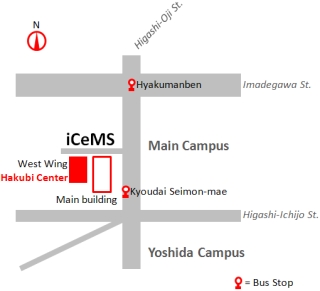Seminar index
3月15日13時に第15期公募情報を公開いたしました。
4月1日13時より応募者登録サイトへの登録が可能です。
Information on the 15th call for applications was opened at 13:00 on 15 March.
Applicants can register on the registration website from 1 April at 13:00.
7th Hakubi Seminar
Debating strategies to foster Nevanlinna prize winners from Kyoto university
- Speaker:Kenya Ueno(The Hakubi Center)
- Date:3rd August 2010 (Tuesday), 16:00-
- Venue:The Hakubi Center (iCeMS West Wing 2F, Seminar Room)
- Presentation Language:Japanese
Summary
Along with the Fields and Gauss prizes, the Nevanlinna prize is one of three prizes awarded at the International Congress of Mathematicians, which is held every 4 years. This Congress was held in late August this year). It is one of the most prestigious prizes in the area of theoretical computer science. While there have been winners of the Fields and Gauss prizes from Kyoto University , nobody from Japan has ever won the Nevanlinna prize since its establishment in 1982.
When we analyze the achievements of the Nevanlinna prize winners in the past, they can be classified in the following two ways. One is significant technical innovations for core problems in computer science. Razborov and Wigderson achieved significant contributions for Boolean circuit complexity. My Hakubi research plan is aiming at this direction. The other one is creation of new research areas from inter-disciplinary approaches. Shor made an algorithmic innovation for quantum computation, which has implications for the areas of physics and computer science. Kleinberg gave prominent mathematical models and analyses for small network networks, which originate from social science. These structures appear in various areas such as human relations, the internet, ecology, and all brains.
In this seminar, we will focus on the latter contribution, and consider strategies to foster Nevanlinna prize winners from Kyoto University in the future.









